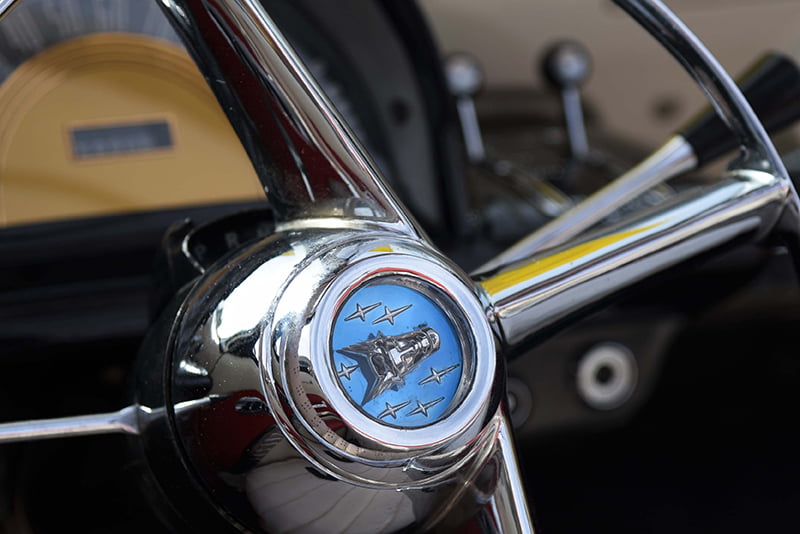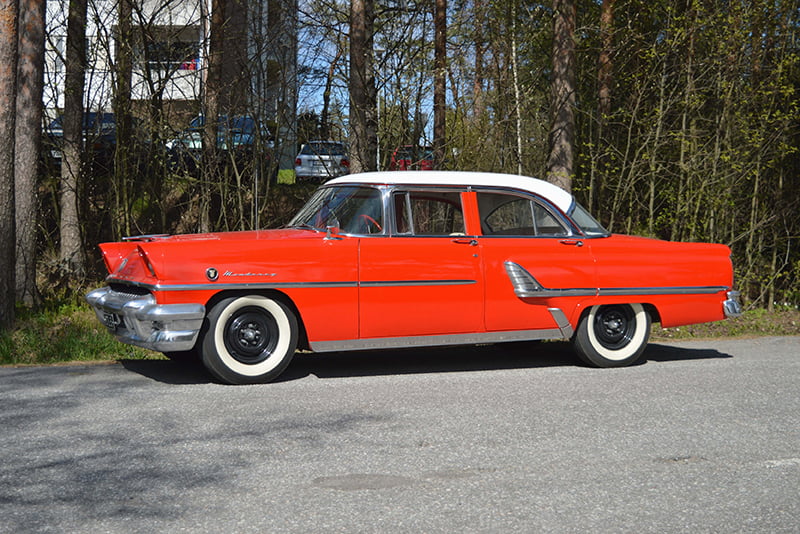As a series of full size cars released by a subdivision of Ford between the 1950’s and 1970’s, the Mercury Monterey never seemed to get the attention it deserved.
While the name “Ford” is often associated with the family style sedans that we see on an everyday basis right here in Australia, in a different time the Ford Motor Company pioneered vehicles that partnered innovation, practicality and style. So much so, that Ford Motor Company founder Henry Ford is now regarded as the pioneer of the assembly line mode of production. In turn, this revolutionised the automotive industry, and ultimately helped Ford to sell millions of cars around the world.
However, after the death of Henry Ford, the company was determined to retain its status as an automotive titan in the United States marketplace. Determined to continue Ford’s domination of every tier of the market, his son and successor Edsel Ford created a standalone brand called Mercury in 1938. Designed to appeal to the middle sector of the American car marketplace, Mercury’s role was to bridge the gap between the Ford and Lincoln model lines – but did it work?
 The Origins Of The Mercury Monterey
The Origins Of The Mercury Monterey
In the early 1930’s, the power brokers at Ford seemed all too aware of the fact that the competition was continuously growing. General Motors was now an umbrella corporation for a whopping seven subsidiaries, such as big industry names like Cadillac, Chevrolet, Pontiac, Oldsmobile and Buick. In comparison, Chrysler was also rapidly expanding their portfolio, with the Plymouth, Dodge, DeSoto now also falling under their banner – and Ford was falling behind.
As such, the first subsidiary brand of Ford was launched in 1939. Named Mercury, the brand’s earliest vehicles shared components and engineering with Ford, serving as counterparts for vehicles released by the already established automotive titan. Many were released as namesakes to the new brand, but it wasn’t until the fifties that the subsidiary truly started to shine with releases such as the Mercury Monterey.
Let’s not forget that the fifties were regarded as a good period for just about all American car manufacturers. An entire generation were exhausted from the war, and were returning to their previous jobs on higher incomes than ever previously seen. Family, fun and frivolity were listed as high priorities, especially for the nation’s battle weary youth.
As such, the first Mercury Monterey was released in 1950 as the flagship, mid-range, and entry-level offering of the full-size Mercury product range.
Intended to compete against the hardtop coupes released by General Motors, the Mercury Monterey simulated the appearance of a convertible through the use of a canvas or vinyl roof. With five different generations released in just ten short years, the Monterey continued to receive both minor and major tweaks in line with market demand, as well as what the competition was up to, and also technology developed by its parent company, Ford.
 While the Monterey continued to be favoured by Ford right through the sixties, sales started to decline in the early seventies. Following the 1974 model year, Mercury discontinued the Monterey, consolidating its full-size range down to the Marquis and Colony Park station wagon. Although it did experience a revival in 2004, the new world Mercury Monterey was once again retired in 2007. Now, classic car collectors generally consider the models of the mid fifties to be when the veteran was at its best, but that of course all boils down to personal preference.
While the Monterey continued to be favoured by Ford right through the sixties, sales started to decline in the early seventies. Following the 1974 model year, Mercury discontinued the Monterey, consolidating its full-size range down to the Marquis and Colony Park station wagon. Although it did experience a revival in 2004, the new world Mercury Monterey was once again retired in 2007. Now, classic car collectors generally consider the models of the mid fifties to be when the veteran was at its best, but that of course all boils down to personal preference.
Your Guide To Everything Classic Cars
Finding a fellow vintage auto enthusiast can feel a bit like finding a needle in a haystack, but rest assured that Classic’s Garage understands the thrill more than most. Having spent forty years collecting anything and everything from matchbox cars to hub caps, he’s successfully followed his passion to source, collect and stock beautiful and low mileage classic automobiles from around the world. With extensive experience in the automotive industry, it was only a matter of time before Wayne expanded on his love of vintage, iconic vehicles to share his knowledge and passion with the public.
Although his passion is for automobiles built before 1978, with a particular love for Buicks, Cadillacs, Lincolns, Oldsmobiles and even Fords, Wayne is just as passionate about the stories of the owners. Just like the cars, he has found that his fellow classic car enthusiasts all have wildly different attractions and logic behind their passion or hobby, and this often translates into how the car is presented. If it’s even remotely different, rare or just plain unusual, Wayne will overcome the relevant logistical and geographical challenges of bringing the cars to his showroom in Australia.
Classic’s Garage is a showroom conveniently located at Seventeen Mile Rocks, that specialises in the restoration and sales of vintage automobiles. If you’re on the hunt for Brisbane classic cars – quite simply, Wayne is your man. If you would like to arrange a viewing or inspect any other of our classic vehicles, please get in touch with us today.


 The Origins Of The Mercury Monterey
The Origins Of The Mercury Monterey